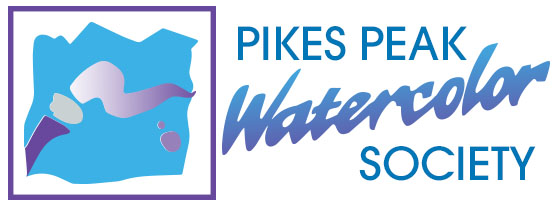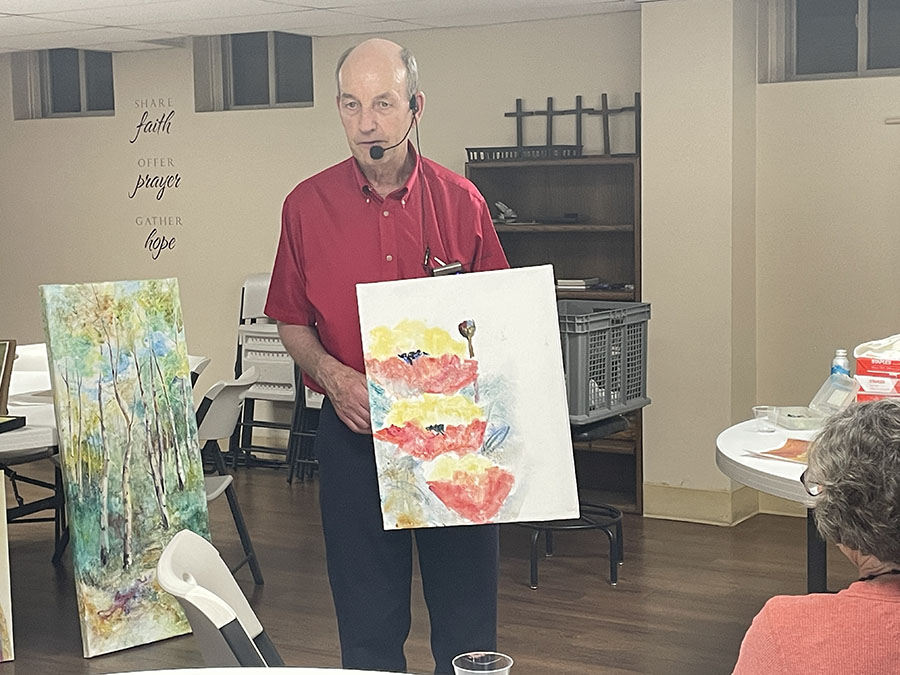Painting a watercolor on canvas
PPWS member Eric Fetsch was our guest speaker. Eric did a great demonstration explaining how he paints his watercolors on canvas and all the products he uses to achieve his one-of-a-kind pieces of art!
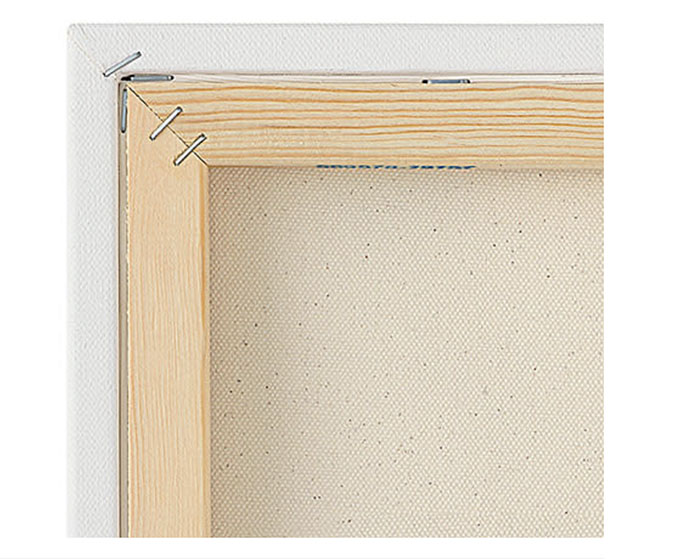
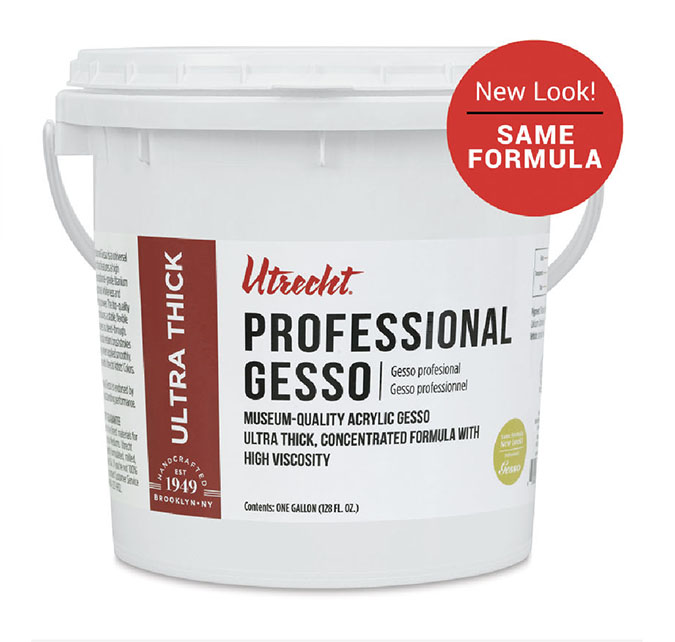
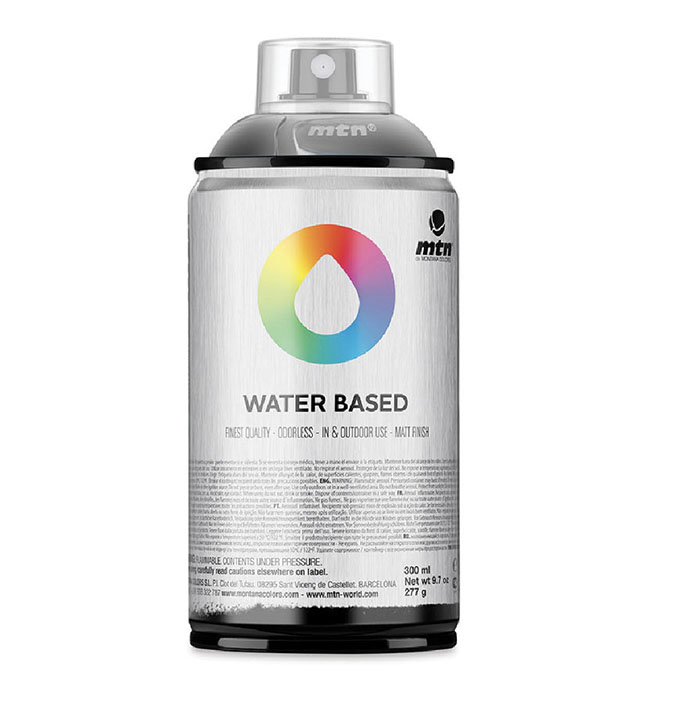
The Materials
Eric likes to use a splined back canvas. A splined canvas differs from traditional side-stapled canvas in that canvas is attached with a spline at the rear of the frame. This allows the artist to incorporate painted edges into the artwork itself without staples on the sides, and the artwork can be displayed without a frame. You can order these from Dick Blick.
He then gives the canvas two light coats of Urtecht Professional Gesso, letting it dry, typically overnight, before he begins to paint. The Utrecht Gesso had to be ordered from the Meininger’s Denver store and delivered to the Colorado Springs store. It takes about 3 days to get delivered. Eric once ordered it online along with a bunch of other art supplies, only to find the gallon of gesso had exploded in his order, due to the altitude changes, covering everything with gesso!
After completing his painting and the painting is dry, he spay coats it with 2 coats of MTN Water-Based Spray Paint Gloss Varnish. You can order this too from Dick Blicks.
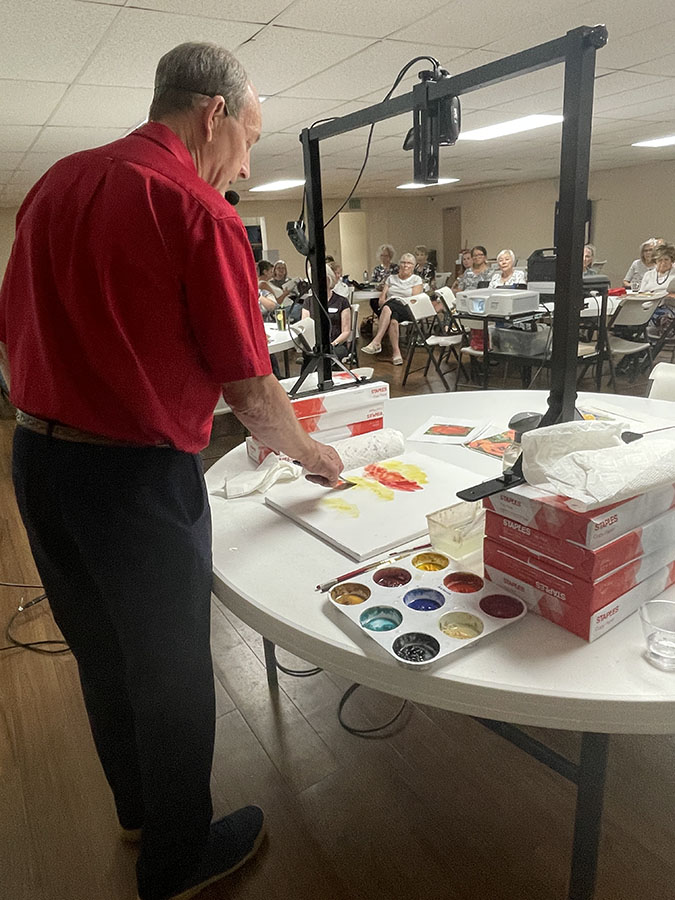
Let’s Paint!
To begin his painting, he lightly wets the area, then starts laying down color. The difference between painting on a gessoed canvas and paper is the paint sits on top of the canvas as opposed to being absorbed into a cotton paper. This allows for easier lifting of colors or fixing a mistake with a wet brush. And, if you don’t like how your painting is looking, just take it the shower and wash it all off!
You can also seal the painting, and then after dry, continue to paint! Eric usually paints 3 to 5 layers on his paintings.
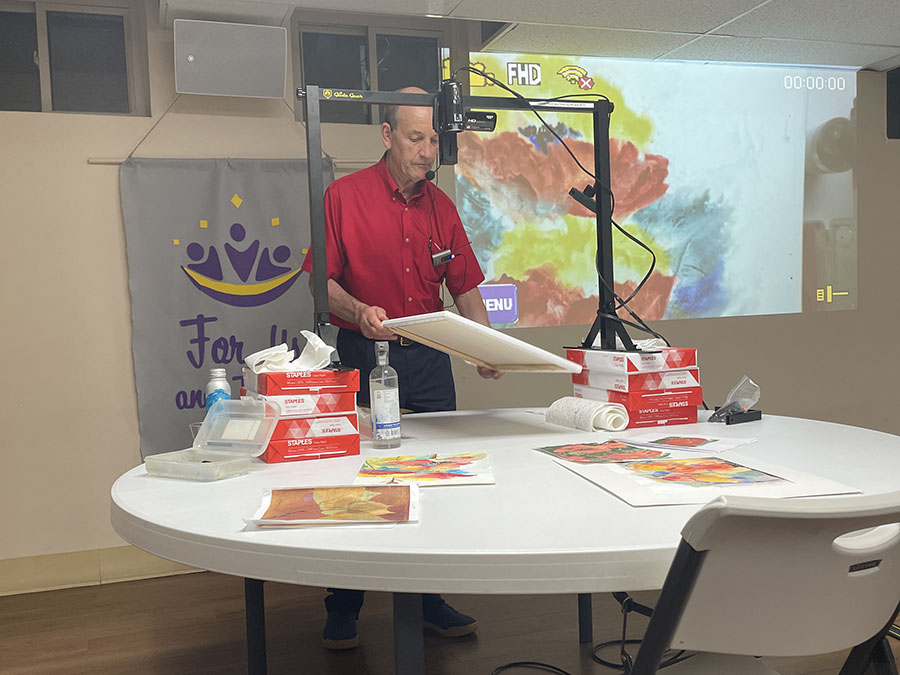
Eric showed us how just lightly spraying water over the canvas, then picking it up and tilting the canvas will allow the paint to move and mix.
Another trick was to lightly spray the canvas with water, then lightly roll a roll of paper towels over the painting. The paper towels pick up small bits of paint giving the painting a light stippling effect!
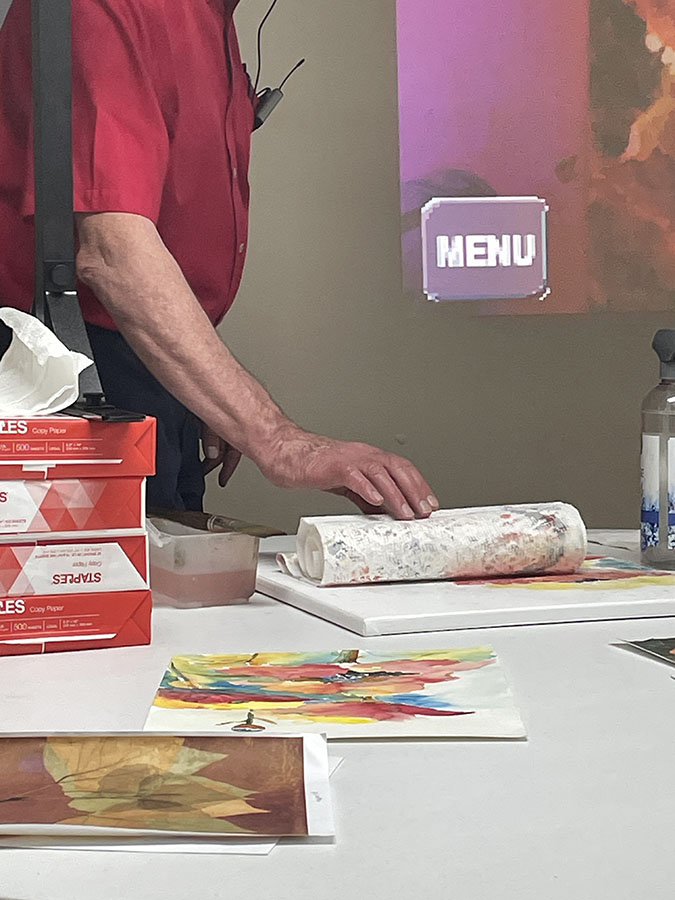
The gesso can also give a painting a soft “fuzzy” look too. Say you have a painting you’re not thrilled with. By painting a a thin layer of gesso over it, you’ll get a soft, ethereal or foggy look. Once the gesso is dry you can either seal it, or continue painting!
Eric also uses Pilot G2 Gel Pens to “paint” with. He will add an outline using the gel pen, then with a wet brush, “move” the gel around! Brilliant!
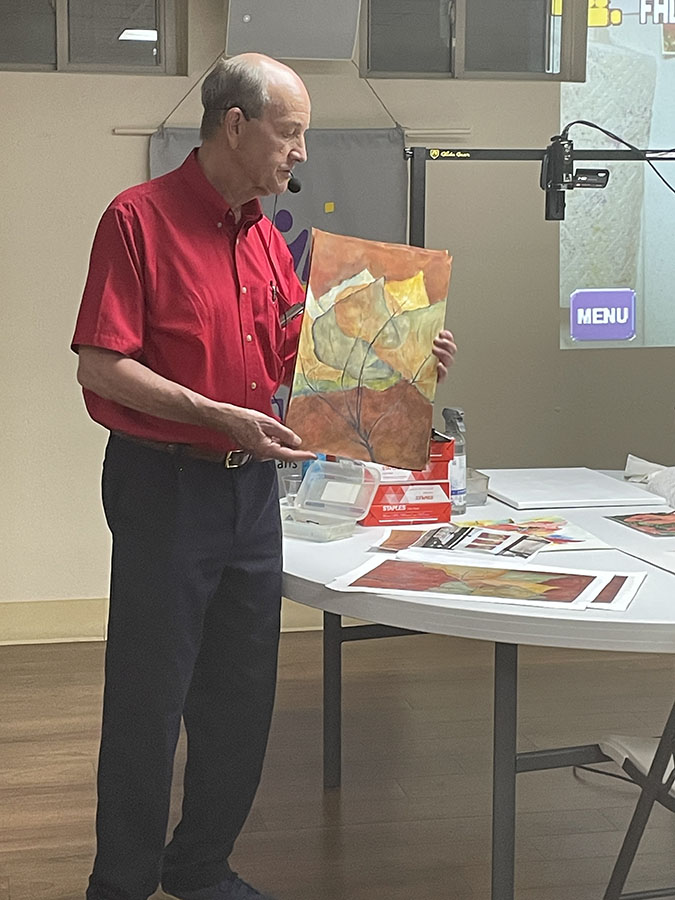

Eric also shared with us a local giclee printer! Eric was commissioned to paint three large autumn leaves. Instead of painting on extra large canvas’s, he painting smaller ones then had large giclee prints made at The Optical Alchemist, located at the Cottonwood Center for the Arts!
To frame his canvas, Eric uses Cardinali Renewal Core Floater Frames that he ordered from Jerry’s Artarama.
To view more of Eric’s art please visit his website! Eric also offers workshops every two weeks year round! You can sign up on his website.
